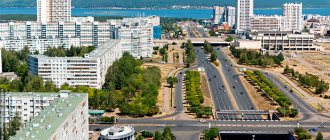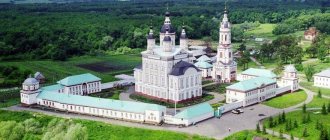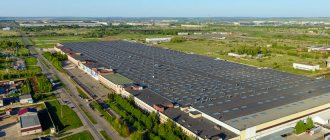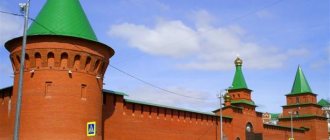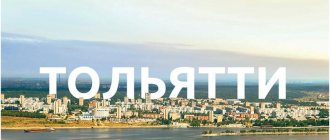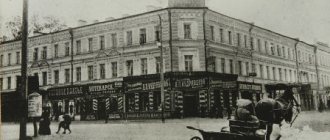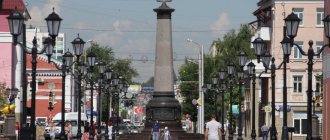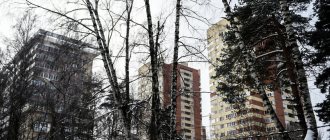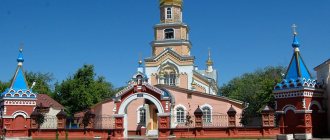In the northeast of Tatarstan, where the Nizhnekamsk reservoir and the Kama River connect, there is a large city called Naberezhnye Chelny . Between each other, the river banks have dams that serve as the basis for roads and railways. Statistics show that according to such a criterion as population, Naberezhnye Chelny ranks 34th in Russia and 2nd in Tatarstan. The head of the city is the head of the Executive Committee, Nail Magdeev. In terms of area, the city stretches over almost 171 square kilometers and about 1.1 million residents are officially registered in this agglomeration area, which ensures the city’s place in the top 20 million-plus cities in Russia. The city is quiet and favorable for summer holidays.
The hottest month is July, but June is not much inferior in temperature. Spring and autumn come quickly due to the low inertia of the atmosphere. Spring is very clear and practically devoid of precipitation. The humidity level in the city is high, which is due to the influence of the Nizhnekamsk reservoir. On average, about 652 mm of precipitation falls per year. The city itself is considered windy, as it was built on a wind rose. It is worth noting that this area is characterized by significant annual temperature amplitudes. November is traditionally cloudy, and winter lasts a very long time with severe but rare frosts and unexpected thaws.
Historical reference
Naberezhnye Chelny almost thoroughly ; Based on their findings, it can be judged that life was present in the territory as early as the middle of the third millennium BC during the Bronze Age. In 1626, a settlement appeared here, which received the name Chalninsky Pochinok. Subsequently, the name changed several times: to “Mass Chelny” and “Red Chelny”. The village adjacent to the settlement later grew into the city of Naberezhnye Chelny.
Each city has its own zest and Naberezhnye Chelny was no exception - it met the end of the 19th century as the largest center of grain trade. And then, already in the 1960s, the city's industrial growth began.
The Nizhnekamsk hydroelectric power station was designed and built, and a decade later the city grew from a population of 20 thousand to a population of half a million.
In the period from 1982 to 1988, the city bore the name of the former head of the USSR Leonid Brezhnev, and after that the historical name returned to its place. After the collapse of the Soviet Union, there was a general decline in industry, also provoked by a major fire and the collapse of the KamAZ engine plant. Only a decade later, the revival of production was launched and the territory began to adapt in accordance with the realities of new times.
History[edit | edit code]
The Bulgarian chronicles of Bakhshi Iman “Jagfar Tarihi” of 1680 mention the founding of the city of Yar Challa in 1172 (volume 1, p. 317) on the initiative of Mullah Mirhaji Nakkar, the father of the poet Mohammed Kul Gali.
On the maps of Italian merchants - brothers Francisco and Domenico Picigano in 1367 and the Catalan Atlas of 1375, the city of Naberezhnye Chelny is also marked as Zhar (in the Kazan dialect of the Bulgarian language the word “Yar” is pronounced as [җр]).
During the period of the Volga-Kama Bulgaria, the modern territory of Naberezhnye Chelny and the Tukaevsky district was part of this state. This is confirmed by archaeological finds, numerous remains of Bulgar ceramics of the second half of the 14th century, found during excavations on Elevator Hill in 1992.
According to documents preserved in state archives, Naberezhnye Chelny was first mentioned in Russian chronicles in 1626. Received city status in 1930.
On November 18, 1982, in connection with the death of the General Secretary of the CPSU Central Committee Leonid Ilyich Brezhnev, the city was renamed “Brezhnev”. The former name was returned in 1988.
National composition of Naberezhnye Chelny
A city with such an interesting territorial scope does not disappoint in terms of its original mix of nations. According to official data obtained during the population census, almost half of the residents (47.4%) are Tatars, slightly less Russians (44.8%), slightly more than a percentage of the total are Chuvash, Ukrainians and Bashkirs (1.95% , 1.31% and 1.16% respectively). The last places in the population are occupied by the Mari (0.66%), Udmurts (0.39%) and Mordovians (0.39%). The remaining 1.82% comes from other nations, represented by single families or migrants. In total, the required 100% can be equated to the figure - 513,735 people with citizenship. This is approximately 13.6% of the total number of residents of the Republic of Tatarstan. But the volume of industrial production of the total is 14.6%. The city can safely be called young and developing, since the average age of a resident is 36.7 years, and according to the census, the majority of citizens are under 29 years old. Many people have a secondary education, but not everyone goes to study at universities, which is explained by the high need for blue-collar skills.
Enlargement
According to the population census conducted in 1647, a group of settlements gradually formed around the Chelny repair, consisting of ten villages and repairs (the group of settlements included Mys, Berezhnaya, Mironovka, Orlovka, Shilnya, etc.). According to the census, 683 (six hundred and eighty-three) peasants, as well as male peasants, lived in these villages. All together they had 296 (two hundred and ninety-six) peasant households and 55 (fifty-five) Bobylev households. Villages and hamlets that were previously located on the site of the city were located along the banks of the Shilna, Chelninka and Melekes rivers.
By order of the Russian Tsar Alexei Mikhailovich Romanov, to protect against the arrival of Kalmyk and Nogai military people, the Chalninsky Cossack fortified town was built in 1650 on the Chalna River, at its confluence with the Kama River.
From the first days of their existence, the settlement of Berezhnaya and Mysovye Chelny turned into trade and craft settlements, in which people were engaged in fur trading, wood processing, fishing, and hauled on river caravans. Then in the past, many years ago, the Kama Valley was a green land with lush floodplain meadows and dense forests. There were also many lakes in which peasants fished. Game birds nested on most of the lakes. Some four or five centuries ago, the banks of the Kama were completely covered with slender pine forests.
This is interesting! History of Kazan, Republic of Tatarstan
Economy and industry
It is worth noting that in Naberezhnye Chelny there live hard-working and active people who know how to achieve their goals, which is ardently proven by achievements in the field of construction, electric power and mechanical engineering. The food and processing industries are developing. The bulk of industrial products in the city are provided by the Kama Automobile Plant, which produces three quarters of the total volume.
There is a cardboard and paper mill in the city, which is a monopolist in its field in Tatarstan. The local meat and dairy plant invariably demonstrates high quality, and the products of the Tukaevskaya poultry farm are exported outside the city.
Energy issues are handled by the city thermal power plant and the Nizhnekamsk hydroelectric power station, together with organizations involved in thermal, electrical and engineering communications. With the growth of the city and its urbanization, the number of jobs in the Kamaz Group of Companies, which owns many factories and organizations in the territory, increases. There are 6 enterprises in the food industry, including OJSC Bulgarpivo, LLC Chelny-Myaso, etc.
Coat of arms
The coat of arms of Naberezhnye Chelny is presented in the form of a French shield. On an azure field there is depicted a golden boat under a sail, with seven visible oars. It floats along the silver wavy end. The vessel has a decoration on the bow in the form of a girl's head wearing a headscarf and flowing ribbons. The stern faces the viewer's right. The sail is divided into green and red parts. Both are edged in gold. At the top are three bezants of the same metal.
The artistic composition is included in the State Heraldic Register of the Russian Federation under No. 1819. Adopted by decision of the Naberezhnye Chelny City Council of People's Deputies No. 31/5 of March 17, 2005.
Transport interchanges
Naberezhnye Chelny is located in the center of railways and highways, so it is always possible to get to the right point in a timely manner. The city has a branch of the Kuibyshev Railway and a Kama branch, which is in charge of transportation in the Kama region.
The city itself is served by two stations: the Round Field, which includes 28 tracks for train communication, a freight yard and a hump; and the cargo and passenger station Naberezhnye Chelny, where loading and unloading of cars takes place, as well as passengers boarding buses. Long-distance trains depart from this station to Moscow, Kazan, Izhevsk, Adler and other cities.
There is also a river port in the city that accepts dry cargo and passenger ships for processing. There is an equipped berth for processing cargo and containers. There is a river station for passengers, designed to accommodate four vessels at a time. Thus, the station can accommodate up to 200 thousand passengers.
What about air travel? And here the picture is very favorable, because there is an international airport “Begishevo”, serving the entire Nizhnekamsk agglomeration.
And for those who do not tolerate flying well or do not want to use the services of the railway, cars are always available; there are plenty of roads in the city; There is a bus station with suburban and intercity bus routes. The federal highway passes through Moscow, Nizhny Novgorod, Kazan and Ufa. In addition, it has access to the cities of Izhevsk and Perm. You can get around the city by tram (14 routes), bus (21 routes) or taxi. By the way, there is a social taxi, designed for a special class of citizens and characterized by great transportation convenience. Trams in the city are close to high-speed ones and facilitate rapid communication between residential areas.
Culture
If we consider Naberezhnye Chelny as a place of residence, then it is worth paying attention to the issue of education and cultural richness of the area. There are 47 universities in the city, so potential applicants and their parents always have a choice. Technologists will no doubt be interested in the Kama Academy of Engineering and Economics, the Naberezhnye Chelny Institute of Trade and the Institute of Advanced Technologies and Business; managers will like the corresponding Institute of Management or the Kama Academy, and creative people are always held in high esteem at KIID (Kama Institute of Arts and Design) and NISPTR (Naberezhnye Chelny Institute of Social-Pedagogical Technologies and Resources).
Local youth may be interested in enrolling in branches of other universities, such as KAI from the Kazan Technical University, NGLU from the Linguistic University of Nizhny Novgorod, MGSGI from the capital's Humanitarian University and many others. The State Drama Theater with the Batyr entertainment complex and the Illuzium cinema are responsible for cultural life. In addition, there is a puppet theater, fashion and Russian drama. The doors of the Klyuch theater-studio, as well as the city art school, are open to young people. There are several cinemas in the city and all of them are original: in addition to the good old Illuzium, there is the Cinema Park animation complex and a real drive-in cinema, Favorit. The history of the city and region can be clearly studied in the state museum, from where you can head to the museum of military glory, ecology and memory of Vysotsky. Next you will go through the art gallery, the Kamaz cultural center and the organ hall. Since the population is heterogeneous, for many the true cultural values will be religious places, namely mosques.
Content
- 1 Population
- 2 History
- 3 Administrative division 3.1 City districts
- 3.2 Complexes
- 4.1 Industry
- 5.1 Higher education institutions 5.1.1 State universities
- 6.1 Hotel "City-)
- 7.1 Television
Religion and architectural monuments
Almost half of the population professes Islam and regularly visits the Tauba Mosque, which has become one of the new symbols of the city. It is not the only one of its kind, there is also the Abuzar Mosque, Ak Mosque, Bilal, Ramadan and others. In the center of the city is the Nur-ikhlas mosque; The construction of the largest and highest cathedral mosque, Jamig, is completed. In turn, the other half of citizens go to Orthodox churches, of which there are also many. This is the Holy Ascension Cathedral, the temple of the unmercenary saints Cosmas and Damian, the temple of St. Tikhon and St. Seraphim.
There are also Protestant communities in the city, for example, the Church of Evangelical Christians “Revival”, “Good News” and the Seventh-day Adventist Church.
Having satisfied the need for holiness, tourists go for cultural enrichment to monuments, for example, fans of Vladimir Vysotsky regularly visit his square, where a guitar is installed in memory. Contemporary art in the city is embodied in the figures of flying women, internationalist warriors and angels. Local residents proudly show tourists the city’s main 24-story hotel, which is nicknamed the “skullcap” for its unique coloring in the colors of the national flag, and the ledge on the roof. Naberezhnye Chelny also has the main attraction for all children - the only permanent dolphinarium in the Volga region, which is a branch of Anapa. The pool is filled with seawater and is inhabited by six dolphins and one northern sea lion.
Nizhnekamsk is a promising administrative unit
Nizhnekamsk is a young city, founded quite recently (1961). It is quite large - 237,000 people live here. Nizhnekamsk occupies an area of 116 square meters. km. The city arose as a result of the implementation of a state program for planning and development of territories.
Several city-forming enterprises were built here: a petrochemical plant, a thermal power plant, a hydroelectric power plant, and a tire manufacturing plant. Nizhnekamsk has the status of the most comfortable settlement in Tatarstan, and it was also awarded the title “Cultural Capital of the Volga Region”. The city is a religious center, where many temples and mosques, both Muslim and Orthodox, are concentrated. Nizhnekamsk is well landscaped; there are parks, groves, recreation areas, and beaches on its territory. Many monuments to famous personalities of Tatarstan and Russia have been erected.
Sports and other achievements
By analogy with one of the most successful projects, the KAMAZ football club, founded in 1981, was named. For five seasons the team was in the Major League of the Russian Championship, somewhat slowing down later. The Saturn football club, which existed for five years, has already ended its career. Hockey in the city was a little more fortunate: the Chelny club appeared in 2004 and until 2011 played in the Russian championship; Since 2012, the club has become a member of the Youth League. Volleyball suffered financial disappointment when, due to a lack of sponsorship, the Dynamo club returned to the First League from the Higher League. Luck smiled on the only motorcycle club in Tatarstan, “Saturn,” which existed until the mid-2000s and became the champion of the First League and the champion of Russia. Thanks to the car, there has been some success in the Dakar Rally. Tourists will be interested to know that Naberezhnye Chelny has been holding competitions in long non-stop flights of high-flying pigeons since 1986.
Notable residents
Many wonderful people were born in Naberezhnye Chelny, who are remembered and appreciated mainly in specific circles. For example, Gabdulkhai Akhatov, the initiator of the opening of a pedagogical university in the city, Evgeny Varlamov, a former master of sports and an excellent football player, Firdaus Kabirov, a master of sports in auto racing and winner of the Dakar rally. They speak warmly of Vladimir Vasiliev, an opera singer and director of the Philharmonic. Tamara Tansykkuzhina, world champion in checkers, and Olga Shelest, VJ and journalist, come from Naberezhnye Chelny. There are also many WWII veterans here, in whose honor memorial plaques have been erected.
Education[edit | edit code]
Higher educational institutions[edit | edit code]
State universities[edit | edit code]
- Naberezhnye Chelny State Pedagogical Institute (NGPI)
- Naberezhnye Chelny State Trade and Technological Institute (NGTTI)
- Kama State Engineering and Economic Academy (INEKA) - former Kama Polytechnic Institute (KampI)
- Kama State Academy of Physical Culture, Sports and Tourism (KamGAFKSiT) - former Kama State Institute of Physical Culture (KamGIFK)
- Institute of Continuing Teacher Education (INPO)
Branches of state universities[edit | edit code]
- Naberezhnye Chelny branch of Kazan State University (KSU)
- Naberezhnye Chelny branch of the Kazan State Technical University named after A.N. Tupolev (KSTU named after A.N. Tupolev - KAI)
- Naberezhnye Chelny branch of Nizhny Novgorod State Linguistic University named after. N. A. Dobrolyubova
Administrative division
Conventionally, the city’s territory can be divided into three large districts: Komsomolsky, Central and Avtozavodskoy. Each of them has its own executive bodies. The Komsomolsky district includes the villages of HPP, ZYAB, Sidorovka, Surovka, Orlovka, and Elevatornaya Gora. In addition, the Zamelekesye microdistrict, BSI and Energoraion are adjacent to this area. The central area covers the main industrial and municipal facilities southwest of Highway No. 2, as well as a medical campus and about 36 complexes. Avtozavodskoy district seems to be the most suitable for family living, as it includes areas of low-rise residential buildings, industrial facilities north of highway No. 2, Togaevsky quarry and approximately 26 complexes. In Avtozavodskoye, the construction of new houses is much more active than in other areas, but the time between commissioning is sometimes delayed. Sales here, by the way, are also the most active, since the environment for purchasing housing is the most favorable, there are many green spaces and developed infrastructure, but the level of air pollution is not so high.
Popular message topics
- Butterfly Peacock's eye
Peacock's eye is one of the European and unusual species of butterfly, which managed to get its name because of its unusual spots on its wings. The butterfly is small, but not small in size. In such a butterfly, the range reaches: from 4 to 5 cm - males, - Bottle tree
Australia is a dry place on Earth, so some plants growing there have learned to cope with it. The bottle tree is one of them. This is the most bizarre, heat-loving tree on earth. - Creativity of Tendryakov
Vladimir Fedorovich Tendryakov was born on December 5, 1923 in the village of Makarovskoye, Vologda region. His generation suffered terrible trials; not many of them survived the war.
Construction and its aspects
In Naberezhnye Chelny, residential neighborhoods are designated as complexes and have double addressing, that is, each house has a registration number in the passport and a building address. This tradition dates back to the times when each microdistrict was served by a separate construction team. By the way, street names are rarely explained, so sometimes residents get confused about addresses. In the Komsomolsky and Tsentralny districts there are complexes with the same numbers, which can cause postal collisions. To avoid such situations, it is recommended to use a street address or indicate a city area. Even among local residents there are no shortage of people who want to improve their living conditions and move to new buildings, while city guests are even considering buying only new houses.
Apartments in residential complexes are more cozy and comfortable, transport interchanges are thought out in advance. Little by little, the territory of the New City is being designed and built, on the border of which there is the “Winged” residential complex, designed for 25 floors, offering an excellent view from the window of the city and the Kama River. Highly qualified craftsmen participated in the construction of this residential complex, environmentally friendly materials were used, and brick and panel construction were combined. This residential complex is noted separately due to the use of colored ceramic bricks in construction and the corresponding original exterior. “Winged” is a kind of symbol of the peaceful coexistence of generations, that is, it is not for nothing that it is located at the junction of parts of the city. Apartments here are very expensive, but convenient and comfortable. Potential buyers are also offered the opportunity to purchase commercial real estate in the residential complex; You don’t have to worry about traffic, because shops, shopping centers and educational institutions are located within walking distance.
Business center of the city
The smooth transformation of Naberezhnye Chelny into a big city involves a number of changes in the course of life and human preferences. Developers keep this principle in mind and strive to satisfy the needs of customers as much as possible. Only wealthy people can afford housing on Mira Avenue, but there is something to pay for here. But when looking for commercial real estate, there is no better place than complexes in the center. In the Central region there is a huge traffic volume of up to 700 people per hour. And at least four thousand cars pass per hour. A good place for the construction of the CityLine TDK. In the future, the area will embody the entire business elite of the city. The complex was built with the latest technology and equipped with utilities. The space is very ergonomic, and only high-quality materials are used in decoration. There are already more than a hundred tenants in the CityLine TDK, but this is not the limit, because the point brings substantial profits to furniture and computer stores, banks, accounting offices and shops.

